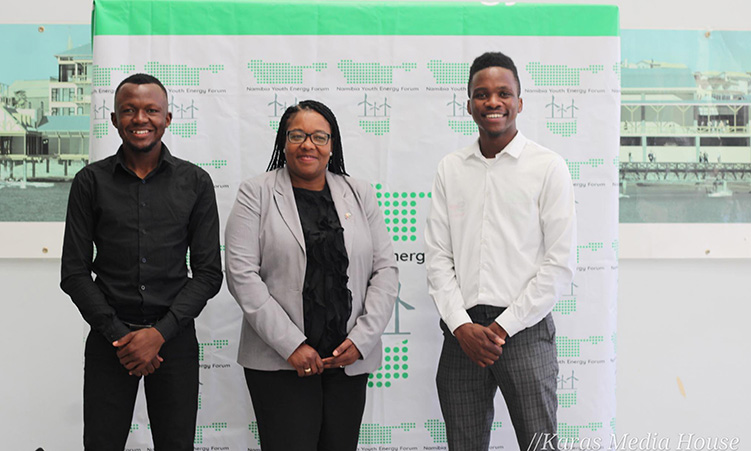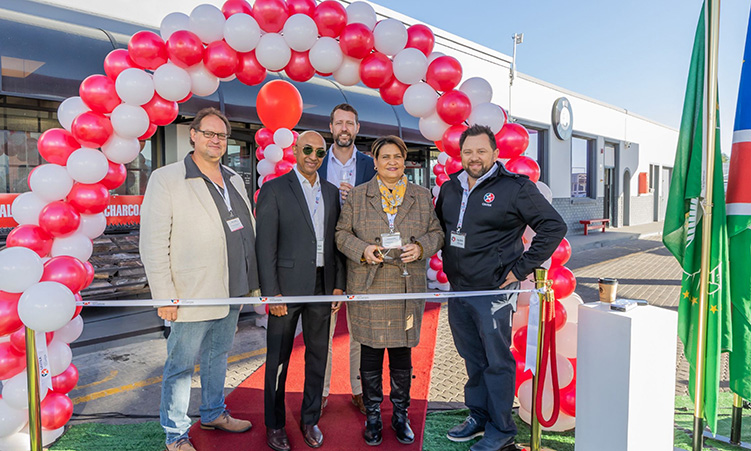ON January 12 1904, exactly 105 years ago today, the first shots were fired at Okahandja when Herero warriors attacked the town and nearby farms to fight German imperial rule.
During several commemorative events held in 2004, demands for reparations were made and calls for dialogue with the present German government to heal the wounds of the past.
Not much has happened in that field – a dialogue was never established, no move to pay compensation was made.
After all, the Herero lost their land and cattle in the uprising, about 80 000 of their people died, most of them while fleeing through the waterless Omaheke Region to Botswana after the Battle of Waterberg.
Chief Samuel Maharero and about 1 500 others asked for permission to live in the former Bechuanaland, arriving near Tsau in December 1904. Thousands of Hereros were put in prison camps at Swakopmund and Shark Island at Lüderitz until 1908. Another camp was set up at the Alte Feste in Windhoek, where lush green lawns today hide the dark truth.
However, a positive outcome of the centenary in 2004 is that the Herero communities in Namibia, Botswana and South Africa have remained in contact since then and debate on the reparation issue has remained lively.
In Namibia, the descendants of the affected communities have drawn closer to each other. These include the Nama people, who joined the armed resistance against German imperialism in 1905, but stopped largely after Nama Chief Hendrik Witbooi was wounded by German troops in October 1905 and died of blood loss.
Small guerrilla units under Jakob Marengo engaged German colonial troops in many skirmishes until 1908, when he was killed in a battle with South African forces a few dozen kilometres from the Namibian border. The centenary commemoration in his honour took place at Warmbad towards the end of last year.
In the USA, Namibians of Herero origin started an association a year ago dedicated to the campaign to seek reparations for their people. The association runs an informative website about the history of the Herero 1904 uprising and has a collection of recent speeches and academic presentations from different scholars about why Germany should pay them compensation for the human rights atrocities inflicted on them during colonialism and for the loss of their land and livestock.
One of the most significant developments last year was that the Namibian Government finally recognised Herero Paramount Chief Kuaima Riruako as a traditional leader just before Christmas – after a legal battle of over 10 years.
In 2001, Chief Riruako filed a lawsuit in the United States, suing the German government and some German companies for US$4 million for atrocities committed against the Herero people during 1904-08.
He used the procedures of the United States Alien Torts Claim Act of 1789 for war crimes committed overseas. This 218-year-old law allows for such a claim by any group or individuals. Hypothetically, had the Hereros won this case, other ethnic groups who suffered during colonisation of western countries would have followed and inundate the Columbia Federal Court with claims. Nothing came of it, however.
Last year, a German television station broadcast the discovery of the skulls of 47 Herero and Nama war prisoners at two different German universities.
The Herero and Nama communities sent a formal request to Prime Minister Nahas Angula after this discovery, asking Government to approach Germany for the return of the 47 ancestral skulls, which were sent for ‘scientific research’ to Berlin over a century ago.
The petition was signed by both Riruako and Nama Chief David Fredericks.
‘We request our Government to kindly request the German government to return the skulls of our people in order for them to be given a proper burial in Namibia,’ the letter stated.
About 50 skulls of dead prisoners from Shark Island were sent to German scientific institutes for measurements and tests.
Officials at the German embassy in Windhoek said after the television broadcast that a formal request would have to come from the Namibian Government to Berlin in order to have the skulls returned. The Namibian Government had the stance that it could only act once a request was made from the affected groups, which was done.
The third significant event in 2008 was when the end of the uprising in 1908 was commemorated at the Katutura community hall. Descendants of the Herero and Nama communities had also invited leaders of the Rehoboth Baster, who staged a revolt against German rule a few years later. Herman Isaks, a representative of the Rehoboth Baster community, announced that the Basters would support the drive for reparations.
FORMER FOES
In 2007, several Herero and Nama chiefs joined hands for the first time in an effort to extract reparations from Germany for atrocities committed against their forefathers during German colonial rule.
Namas and Hereros were bitter foes in pre-colonial times and fought bloody wars against each other around 1860.
At the occasion, Herero Chief Kuaima Riruako, flanked by Nama Chief David Frederick, presented a joint position paper on reparations.
In the paper, both ethnic groups jointly demanded direct dialogue on reparations with Germany despite Germany’s stance that such dialogue should only be held between governments.
‘We have initially raised the issue and now it should be about us and with us, but appears to be without us,’ the chiefs said.
‘What happened to our ancestors was genocide as defined in international law, and in view thereof we demand just reparation for damages and losses to our ancestors in terms of their own lives, their land, their livestock and other forms of their property,’ the document stated.
The German government started a ‘special initiative’ some three years ago, which allocated 20 million euros (about N$200 million) to the Herero, Nama and San communities. Cabinet decided in 2007 that Germany’s special initiative should be implemented.
The same year, an opposition party in the German Bundestag (Parliament) tabled a motion on the Herero genocide. Only a few members participated and early in 2008, the motion was rejected.
In 2006, Namibia’s National Assembly debated a similar motion tabled by Chief Riruako, which was accepted, and this was officially communicated to the German government by the Office of Prime Minister Nahas Angula.
While both the German and Namibian governments have remained mum on calls for dialogue and reparations in the past five years, the possible return of the 47 skulls could give new impetus to the demands of the Herero, Nama and Baster people.
Stay informed with The Namibian – your source for credible journalism. Get in-depth reporting and opinions for
only N$85 a month. Invest in journalism, invest in democracy –
Subscribe Now!










